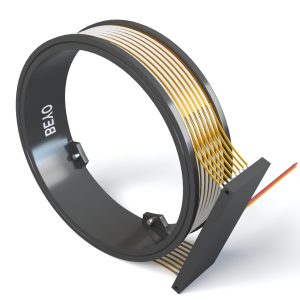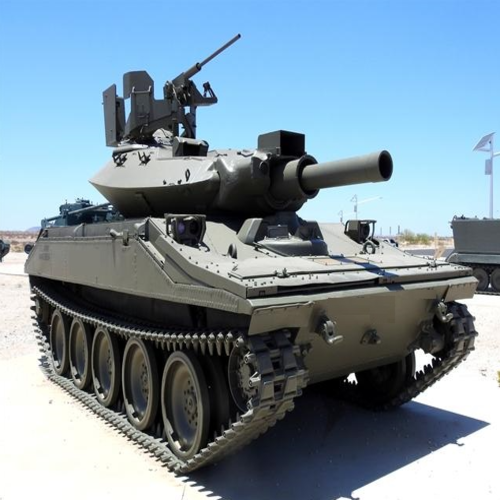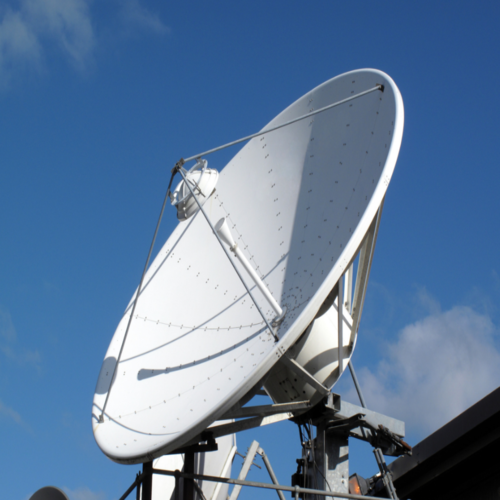how does a slip ring work?
Slip ring is essential component used in various industrial applications to enable continuous rotation while facilitating the transmission of power, signals, and other media. They play a vital role in ensuring the seamless operation of rotating equipment that requires electrical connections, data transfer, or fluid transfer between stationary and rotating parts. In this article, we will explore the working principles of slip rings, their components, and their significance in modern machinery.
Slipring, also known as a slip ring connector, is a device that allows the transmission of electrical power, signals, and media (such as fluids or gases) between stationary and rotating parts of a system. It consists of two main components: a rotor (or rotating part) and a stator (or stationary part). The rotor is typically connected to the rotating element of the machinery, while the stator remains fixed. The key function of electrical slip ring is to establish electrical connections or transfers while enabling continuous rotation.
1.1 Electrical Connections:
The primary purpose of electrical slip rings are to transmit electrical power and signals across the rotating interface. It achieves this through conductive paths that connect the rotor and stator. The conductive paths are typically in the form of metal rings mounted on the rotor, which maintain continuous contact with brushes or contacts on the stator. These brushes or contacts provide electrical connections to external circuits or devices. As the rotor rotates, the brushes or contacts maintain contact with the rings, ensuring the flow of electricity.
1.2 Media Transfer:
In addition to electrical connections, slip ring connector can also facilitate the transfer of other media, such as fluids or gases, between the stationary and rotating parts of a system. This is accomplished by incorporating channels or passages within the slip ring assembly. The channels can be designed to allow the flow of various media, depending on the requirements of the specific application. Sealing mechanisms are often employed to prevent leaks and maintain the integrity of the media transfer.
Types of Slip Rings
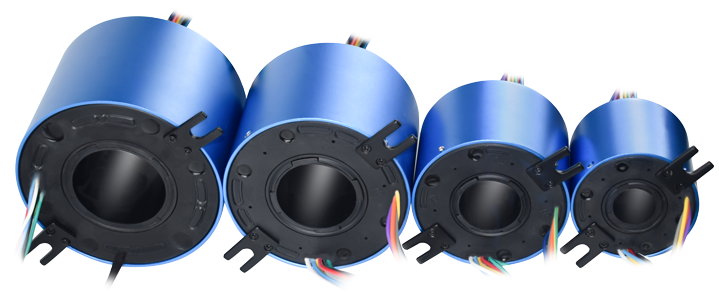
2.1 Through Hole Slip Rings:
Through hole slip rings consist of a central aperture that allows the passage of cables, shafts, or other components through the center of the slip ring assembly. This design is commonly used when the rotating equipment requires a shaft connection with their equipment, Beyo Transfer have a range of standard of through bore slip ring from ID 12mm to 100mm in stock.
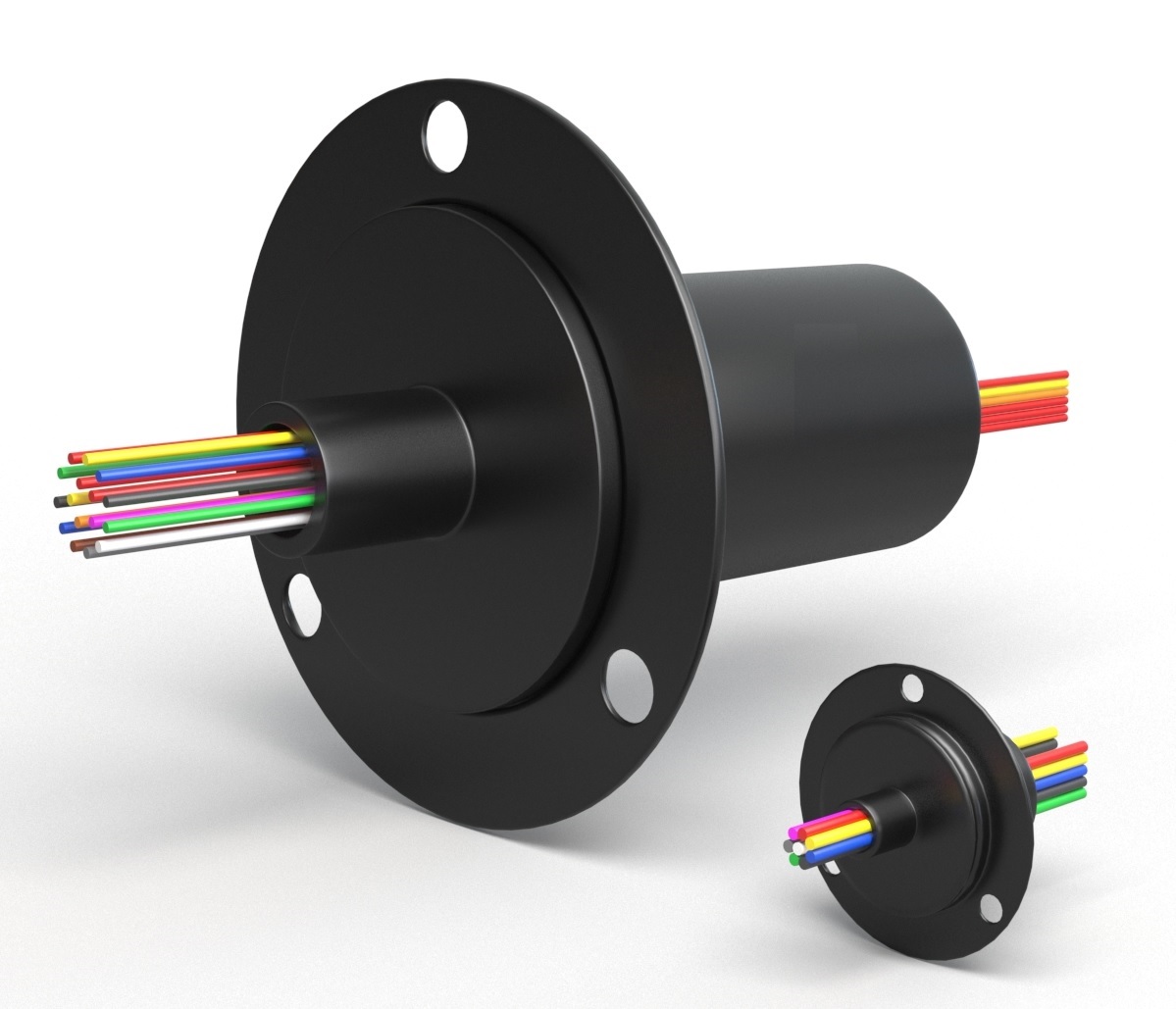
2.2 Capsule Slip Rings:
Capsule slip ring we also called miniature slip ring, it’s a compact units that integrate the slip ring assembly into a single enclosure. They are designed for applications where space is limited, and a smaller footprint is required. Capsule slip rings often have multiple circuits and can support the transmission of power, signals, and media simultaneously.
 2.3 Ethernet slip rings:
2.3 Ethernet slip rings:
Ethernet slip rings are specialized slip rings designed specifically for transmitting Ethernet signals.The enable high speed data communication between rotating and stationary parts of system, making them suitable for applications that require real time data transfer, such as surveillance cameras or automation systems.
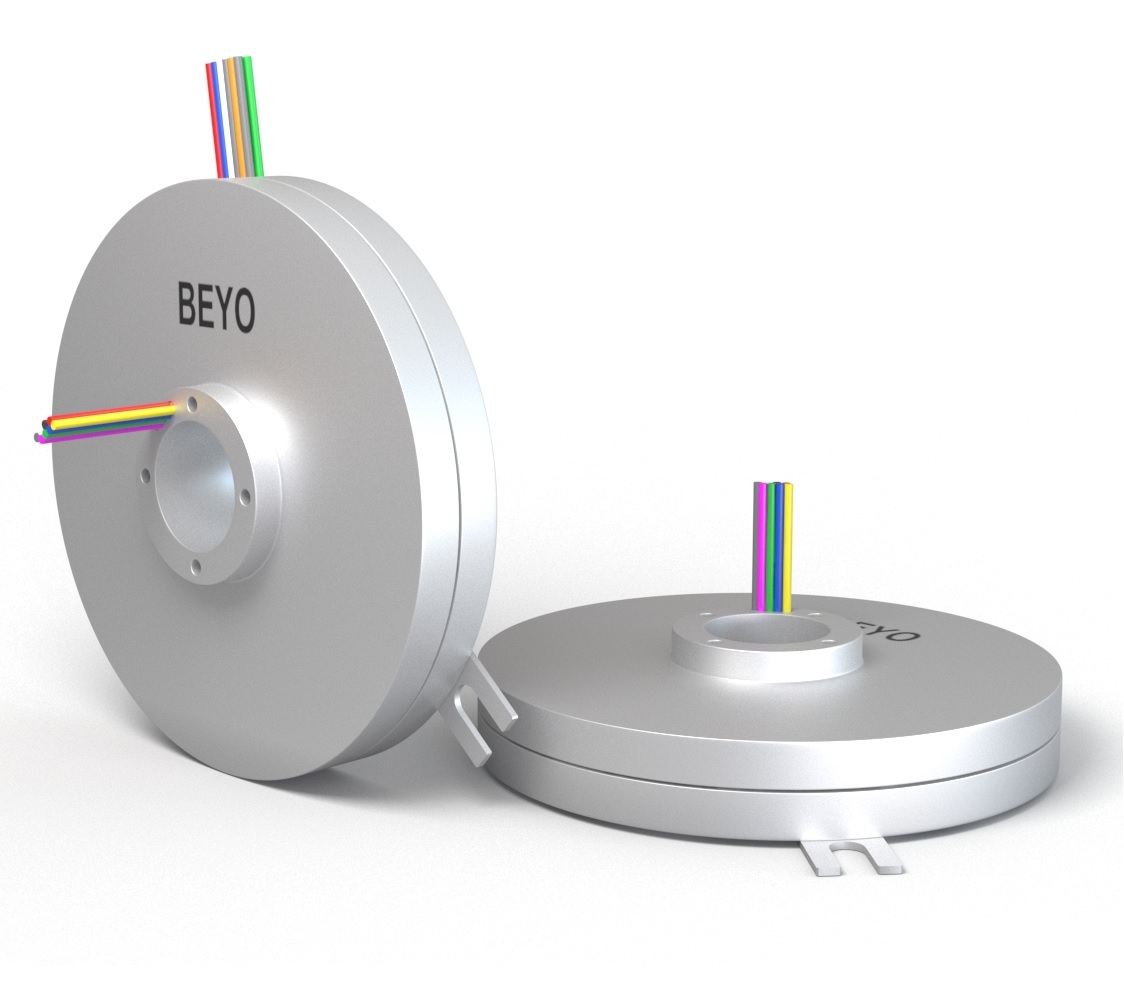
2.4 Pancake Slip Rings:
Pancake slip rings have a flat, disc-like shape with a large diameter and a compact height. This design allows for a greater number of circuits in a smaller package. Pancake slip rings are commonly used in applications that require a high density of electrical connections.
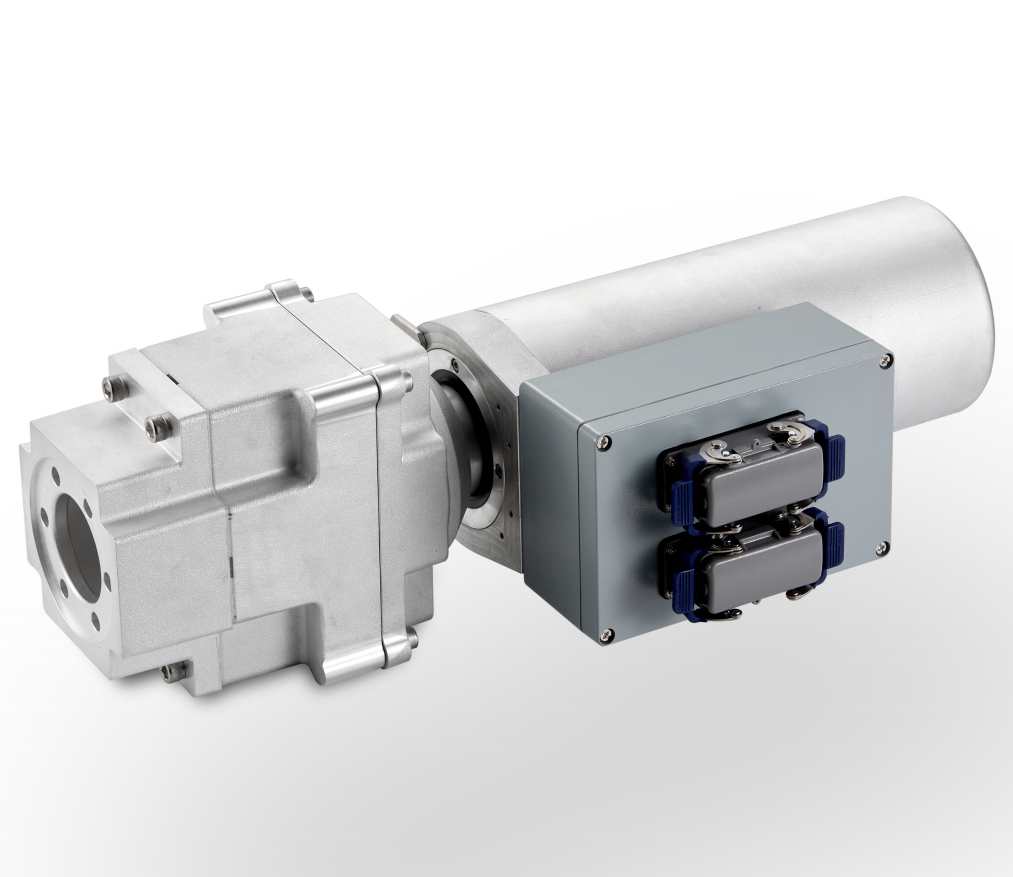
2.5 Wind turbine slip rings:
Wind turbine slip ring is a specialized electromenchanical device that facilitates the transfer of electrical power and signals from the tower or nacelle to the blades and hub in a wind turbine. The slip rings allows for continuous electrical connections without the need for tangled wires or cables that would limit the rotation of the turbine.
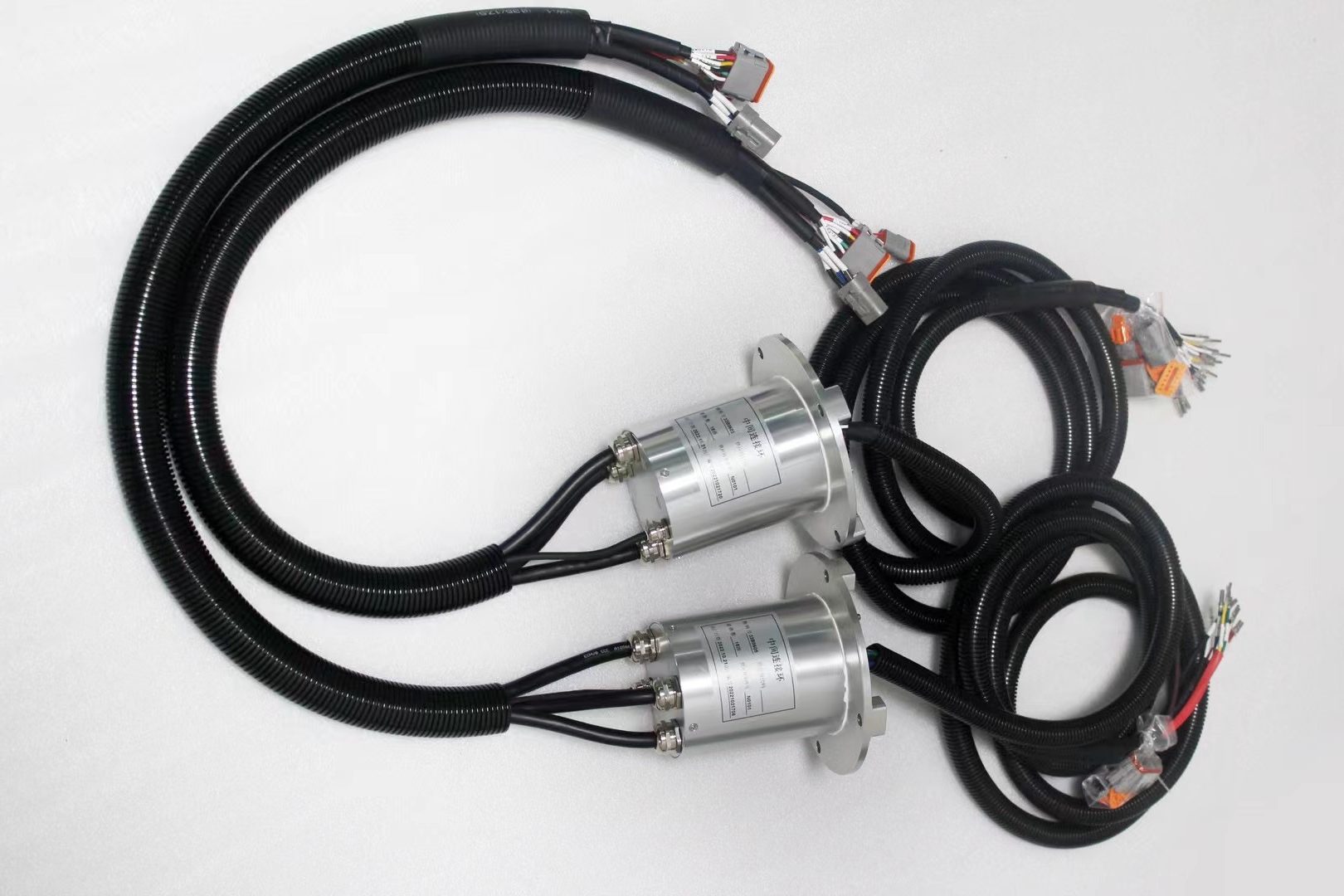
2.6 Crane slip rings:
Crane slip ring are specialized slip rings designed for crane applications. Crane slip rings are essential components that enable continuous rotation of the crane’s boom or jib while providing electrical connections and media transmission between the rotating and stationary parts of the crane, Beyo Transfer offers IP68 waterproof crane slip rings to meet outdoor harsh environmental conditions, including vibrations, extreme temperatures and exposure to dust and moisture.
Key Design Elements of slip ring
3.1 Conductive Rings and Brushes/Contacts:
The conductive rings, mounted on the rotor, are a fundamental component of slip rings. They provide a continuous conductive path for electrical power or signals. The rings are typically made of materials with good electrical conductivity, such as copper or silver. The number of rings depends on the requirements of the specific application.
On the stator side, brushes or contacts are used to establish electrical contact with the rings. The brushes are typically made of fiber brushes gold to gold or silver to silver contact material to insure good conductivity and ability to maintain contact with the rotating rings.
3.2 Sealing Mechanisms:
Slip rings often operate in demanding environments where they may be exposed to dust, moisture, or other contaminants. To protect the internal components, sealing mechanisms are incorporated. These mechanisms ensure that the slip ring remains sealed and safeguard against the ingress of contaminants.
Various sealing techniques can be employed, including labyrinth seals, O-rings, or magnetic seals. Labyrinth seals use a series of interlocking grooves to create a tortuous path, preventing the entry of contaminants. O-rings provide a reliable seal by compressing against mating surfaces, creating a barrier against external elements. Magnetic seals utilize magnetic forces to maintain a tight seal, even during rotational movement.
3.3 Precise Contact and Low Friction:
To ensure efficient electrical transmission and minimize wear, slip rings are designed with precise contact between the rings and brushes/contacts. The contact surfaces are carefully engineered and finished to achieve low electrical resistance and reduce signal loss.
In some slip ring designs, the rolling contact principle is employed to enhance electrical performance and reduce wear. Rolling elements, such as balls or rollers, replace brushes and make contact with the rings. This design reduces friction, minimizes wear, and ensures a stable electrical connection, making it suitable for high-speed rotation or harsh operating conditions.
3.4 Bearing Arrangements and Lubrication:
Slip rings incorporate bearing arrangements to support smooth and reliable rotation. These bearings are crucial to minimize friction and maintain precise alignment between the rotating and stationary parts. Proper lubrication is also essential to ensure long-term performance and prevent damage due to excessive wear or heat buildup.
Slip rings are vital components that enable continuous rotation while providing electrical connections and media transfers in various industrial applications. By understanding the principles of operation and incorporating key design elements such as conductive rings, brushes/contacts, sealing mechanisms, and precise contact surfaces, slip rings deliver reliable and efficient performance. As technology advances,as a leading slip ring manufacturers in China, Beyo Transfer continue to innovate, developing new designs and materials to meet the evolving needs of modern machinery.


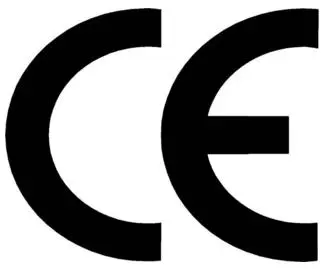


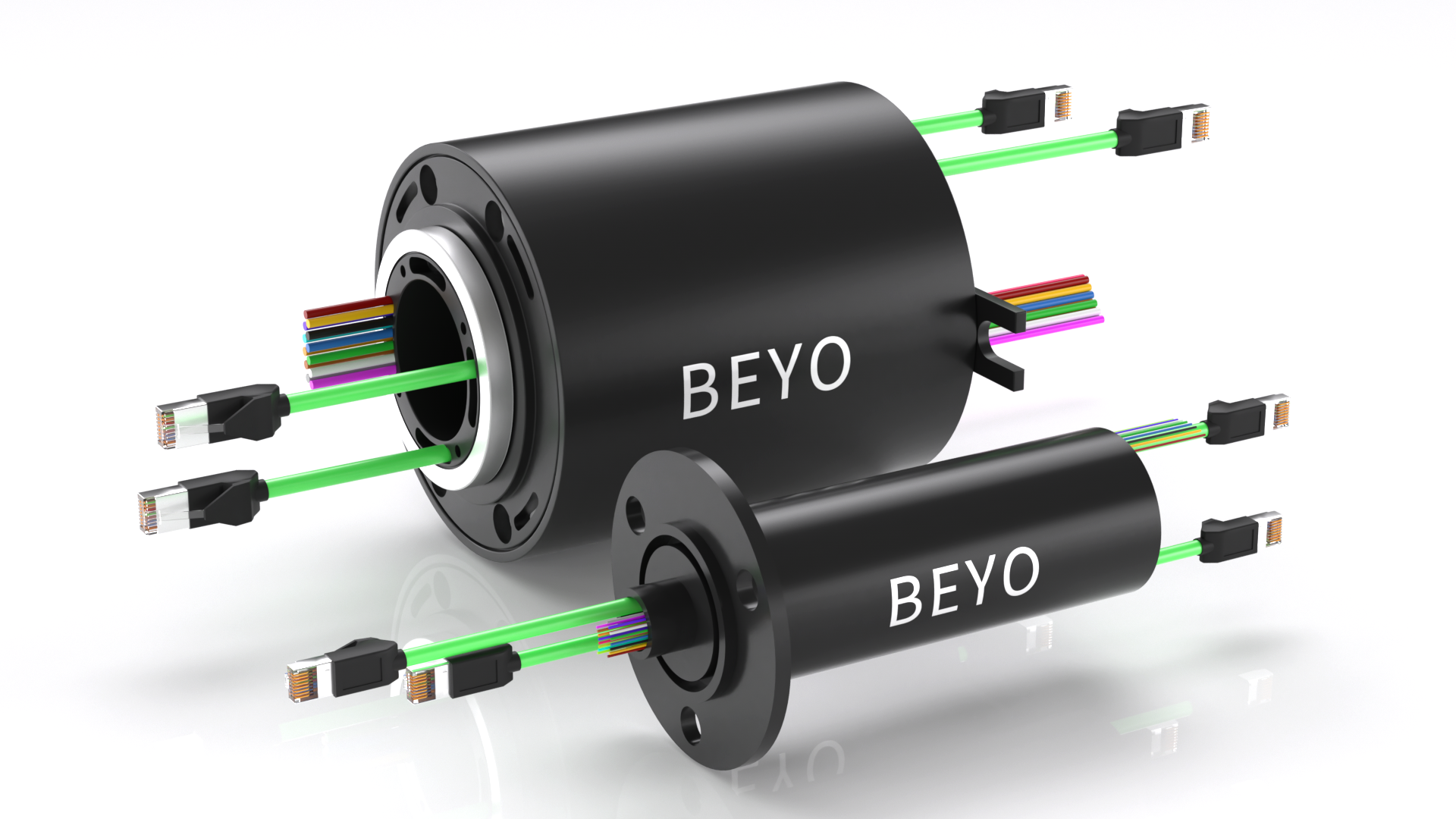 2.3 Ethernet slip rings:
2.3 Ethernet slip rings: